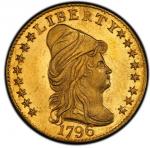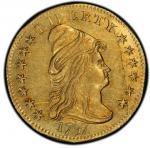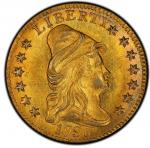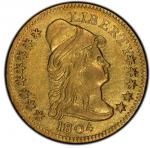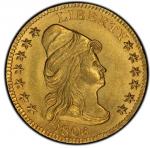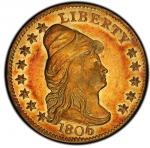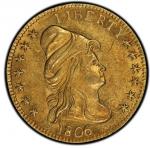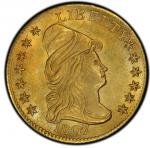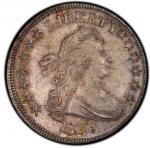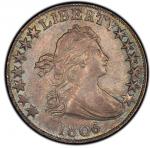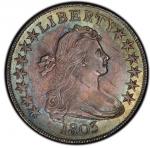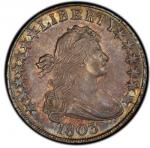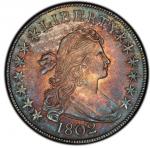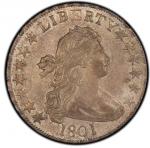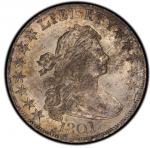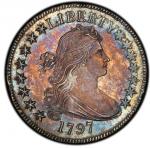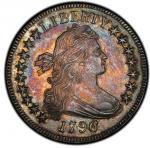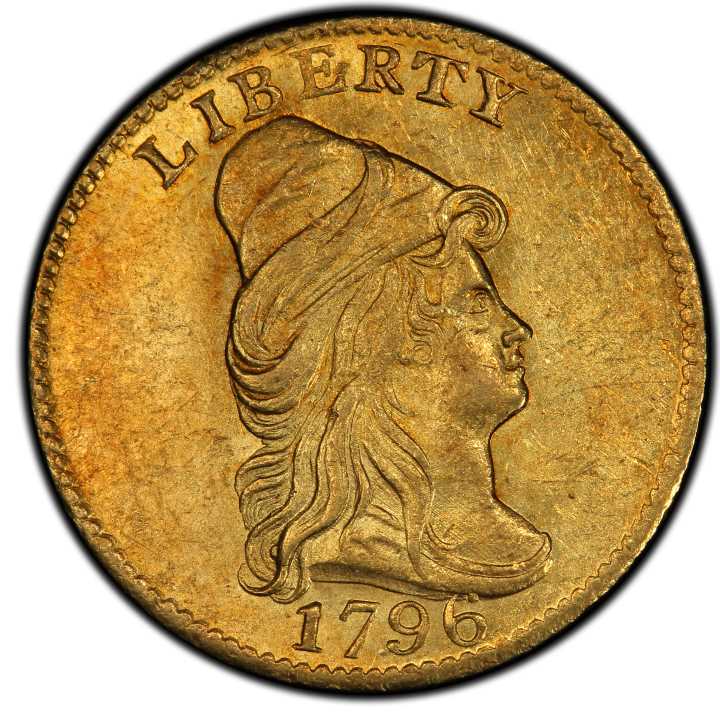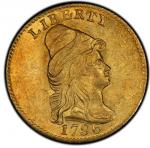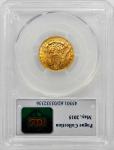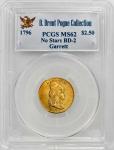The most desirable specimen of the first American quarter eagle. There are few classic rarities struck at the Philadelphia Mint in the 18th century that can offer this coin s combination of a long and august provenance with such extraordinary preservation. Cartwheel luster swirls around both sides, with warm muted coppery toning highlights enlivening the natural rich yellow gold surfaces. The distinctive design, much desired as a cornerstone in any type collection of United States coins, is ideally illustrated here, unworn and beautifully realized. The strike is firm, with the usual softness in the denticles limited to just a short arc in the upper right obverse and the corresponding area of the reverse. The surfaces are frosty and fresh, particularly so on the gem quality reverse. Some hairlines are visible on the obverse, typical of the type, whose lack of stars offers little protection to the wide open expanse of field around the central device. A tiny contact mark is noted at the corner of Liberty s eye, and a scattering of inconsequential contact points are seen on both sides. The visual appeal is immense, and the old-time character of the surface tells the story of a coin that has been blessedly left alone for well over a century. Unlike the Parmelee coin (PCGS MS-65, the only specimen certified at a higher numerical grade by PCGS), there are no notable adjustment marks, just the merest trace outside the denticles at the right side of the reverse. The peripheral strike of this piece is a trifle sharper than the similarly graded Oliver Jung coin, which we were fortunate enough to offer in 2004. The die state is crisp and early, with the bud of a die crack at 9:00 on the obverse, the slightest trace of one connecting BER of LIBERTY, a vertical crack from the top of the head almost to the right foot of E, identical to the retained Bass coin plated as an example of the earliest die state. PCGS CoinFacts records two offerings of a PCGS MS-62 (the same coin, the Swan-Jung specimen, sold in 2004 and 2008, now represented on the PCGS Population Report as both MS-62 and MS-62+) and two offerings of a PCGS MS-65 (the same coin, ex Parmelee, sold in 2005 and 2008). The present coin has been offered on the market exactly twice since 1883 (1980 and 1999). About 100 specimens of this type are thought to survive in all grades, ranging from worn ones and those made into jewelry, to the 10 or so examples that have graduated to Mint State certifications. PCGS estimates that just seven coins survive in grades of MS-60 or higher. The original mintage is thought to have been 897 pieces, so this first year of issue has survived in higher numbers than raw statistics might predict. However, the number of Mint State survivors is paltry, and the number of nice Mint State pieces smaller still. As the very first type of one of our most durable denominations, struck in most years from 1796 to 1929, the 1796 No Stars quarter eagle is an historic landmark. It represents a compromise between the strict decimal approach espoused by Thomas Jefferson, a plan that begat mills, cents, dollars, and eagles, and the fractional mindset that became familiar to 18th century Americans through the use of Spanish and Portuguese gold denominations. The Spanish doubloon, or eight escudos, was divided into halves and quarters worth $4 and $2 respectively. The Portuguese Johannes was worth the same as an eight escudos. The half joe of $8 was ubiquitous in early America, and the quarter joe was likewise in common use. The quarter eagle denomination parallels the Spanish pistole, worth two Spanish milled dollars, an intentional near-imitation. Beyond the historic interest in this piece, those who collect United States coins by design type have made this one of the most in demand of all U.S. coins. No other gold coin mimics this variety s No Stars design, making this particular issue a necessary inclusion in a complete United States type set. The state of preservation, technical merits, aesthetic quality, and provenance combine to make this perhaps the most desirable example of the 1796 No Stars quarter eagle extant.

